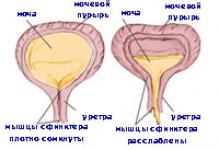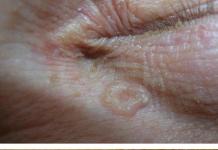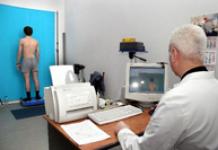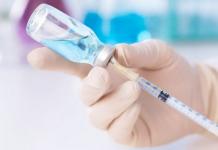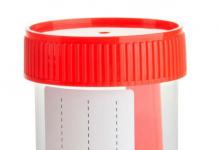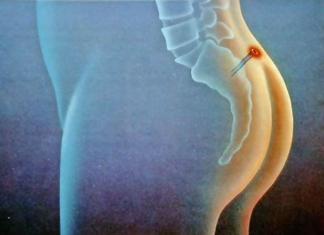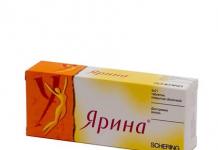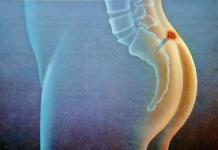High blood pressure is an important risk factor for the development of cardiovascular accidents, which include myocardial infarction and cerebrovascular accident. In case of arterial hypertension, this parameter should be kept under close control and prescribed medications should be taken. One of the common manifestations hypertension– crisis. This is a rise that is accompanied by severe neurological and cardiac symptoms and requires help. Uncomplicated hypertensive crisis occurs more often. This term means that the target organs: heart, retina, brain are not affected.
Causes
A sharp jump in pressure is most often observed with severe psycho-emotional stress, as well as during or after physical activity. These factors should be taken into account when collecting complaints and anamnesis, and indicated in the outpatient card or medical history. In elderly patients among exogenous factors changes in weather conditions prevail. There is a clear relationship between the level of arterial and.
Dietary habits can also cause a hypertension crisis. Thus, excess salt consumption increases sodium levels in the blood. This electrolyte sharply increases the volume of circulating blood, which raises blood pressure. Among the nutritional risk factors for crisis development, alcohol abuse plays an important role.
Important! During a crisis, the doctor should tell you about the medications you are taking, even if they are used to treat diseases not related to blood pressure.
Medicines can increase vascular tone, increasing blood pressure numbers. These include the following means:
- Oral contraceptives.
- Antidepressants.
- Non-steroidal anti-inflammatory drugs.
- Berodual, salbutamol and other b-adrenergic agonists used in the treatment of bronchial asthma.
- Steroid hormonal drugs.
Exacerbation of any chronic disease may occur with unstable blood pressure. Most often this occurs in pathologies of the kidneys, pancreas, prostate, and obstructive pulmonary pathology.
The most important reason for the development of a crisis in patients with already diagnosed hypertension is non-compliance with the doctor’s recommendations. Neglecting a regular regimen of taking antihypertensive drugs leads to sudden surges in blood pressure.
Approaches to classification
Pathogenetically, two types of crises are distinguished: adrenal and noradrenal. They differ in that the main transmitter is adrenaline in the first case, and norepinephrine in the second.
This division is important for emergency physicians or outpatient doctors. After all, the choice depends on the type of crisis.
Uncomplicated hypertensive crises are divided into:
- Catecholamines.
- Renin-dependent.
- Sodium dependent.
Since it is impossible to predict the pattern of blood pressure increase, it is recommended to monitor the patient and use drugs alternating them.
Symptoms
The clinical picture depends on the type of crisis. Symptoms are brighter with the adrenal variant.
It typically develops within a few minutes (but not more than a few hours). In turn, with a norepinephrine crisis, manifestations occur within several hours (sometimes up to 48 hours).
A patient with a crisis complains of severe headaches. They are usually pulsating. Localized in the area of the back of the head, crown, temples. Possible dizziness. The patient may experience nausea and vomiting. These manifestations are reflexive in nature.
You should pay attention to changes in vision. This may be the flickering of flies before the eyes, darkening. A more serious sign is double vision (diplopia). Then signs of cerebrovascular accident and hypertensive encephalopathy should be excluded. Transient blindness indicates possible eclampsia and indicates a poor prognosis and the malignant nature of hypertension.
Discomfort behind the sternum indicates the presence of a pathology such as hemodynamic angina. At high blood pressure there is a tendency to tachycardia. Interruptions in heart function are less common.
During sudden jumps blood pressure autonomic dysfunction is activated. Therefore, the following symptoms and complaints occur:
- feeling of heat in the face;
- hyperhidrosis;
- fear, fright;
- increased urination;
There may be swelling of the legs. This speaks indirectly about the norepinephrine type of crisis with fluid retention and the predominance of the vascular component in the development of symptoms.
Urgent Care
First of all, you need to stop any load. The patient is advised to sit or lie down. The position that works best is with your head elevated and your legs down.
Measured deep breathing helps to slightly reduce blood pressure. It is acceptable to use either valerian.
If the pressure rises for the first time, it is necessary to call ambulance. Immediate treatment is needed when:
- Vomit.
- Persistent headache.
- Double vision or transient blindness.
- Interruptions in the functioning of the heart or pain in the chest.
- Severe swelling.

When calling an ambulance, you should voice the pressure numbers, main complaints, age, and personal data of the patient.
Drugs for the treatment of uncomplicated crisis
The range of medications for blood pressure is wide. In case of a sharp rise in pressure, preference is given to means with a minimum time for the development of the effect and rapid elimination from the body.
The tactics of antihypertensive therapy for uncomplicated hypertensive crises consists of a gradual decrease in blood pressure. That is, 20 minutes after the start of treatment, the numbers should decrease by at least 30-40% from the original ones.
In the presence of heart failure, severe shortness of breath and edema, diuretics are indicated. This is Lasix, Furosemide. They are administered parenterally depending on patient tolerance.
If there is a tendency to tachycardia, it is better to stop the crisis. It is a short-acting β-blocker with a rapid onset pharmacological effect. Can be replaced with Metoprolol (under the tongue).
Under normal conditions heart rate Captopril is used. 25 mg sublingually sufficiently reduces blood pressure. In older people it is better to use half the dose. An alternative option is reception.
It is effective to administer sulfate intravenously in a hospital setting (uncomplicated). Another effective parenterally administered drug is Enap. Action time: 6-8 hours.

Traditional methods of treating uncomplicated crises
It is better not to resort to unconventional methods. This condition is quite dangerous and therefore requires adequate help.
If the crisis has not developed for the first time, you can try sedative herbs: motherwort, valerian, lemon balm. But this should be an auxiliary method, and not an independent method of treatment.
Crisis prevention
You can prevent sudden jumps in blood pressure only by following your doctor's recommendations. This applies to following dietary recommendations (excluding table salt). It is recommended to optimize the water regime. Work and rest must be arranged rationally.
Regular use of antihypertensive medications is the best option. The time for taking the tablets should be fixed. The dose varies depending on the level of pressure. You cannot stop taking the pills.
Hypertensive crisis is a syndrome in which there is a significant increase in blood pressure. In this case, symptoms of damage to the main organs develop - the heart, lungs, brain, etc. This condition is very serious and requires assistance emergency care, since, otherwise, serious complications may develop.
According to medical statistics, the disease develops in 1% of patients who have a history of it. But usually a hypertensive crisis affects people with hypertension (HT) - more than 30% of cases. It is important to diagnose it in a timely manner and carry out competent treatment to avoid development dangerous complications.
Causes
To date, there is no exact opinion regarding the main reasons for the progression of hypertensive crises. Many scientists are confident that this pathological condition is nothing more than a complication of diseases characterized by periodic increases in blood pressure. Therefore, clinicians tend to assume that the main reasons for the progression of this disease are the following pathologies:
- vessels;
- nephropathy of pregnancy;
- pheochromocytoma;
- Page's syndrome.
In many clinical situations, the main reason for the progression of a hypertensive crisis is ailments associated with the destruction of blood vessels located in the kidneys. But in this case, the disease is caused not so much by increased pressure as by cerebral edema.
Provoking factors:
- endocrine diseases;
- change in climatic conditions;
- reception large doses alcoholic drinks;
- eating more salt than the daily norm;
- air travel;
- stress, lack of sleep.
Varieties
There is no uniform classification of hypertensive crises. Clinicians distinguish all of them according to the mechanism of increase in blood pressure, depending on the clinic, and according to the intensity of complications.
According to the presence/absence of complications:
- complicated;
- uncomplicated.
Depending on the clinic:
- neurovegetative;
- hydropic;
- convulsive.
According to the type of blood pressure increase:
- hyperkinetic;
- hypokinetic;
- eukinetic.
Symptoms
The symptoms of a hypertensive crisis directly depend on the type of pathology that affects the person. But the most common symptoms that appear are:
- chills;
- fear;
- anxiety;
- a growing feeling of anxiety;
- hyperemia;
- neurological disorders;
- trembling of limbs;
- irritation.
Uncomplicated
This type of hypertensive crisis develops mainly in the presence of grade 1–2 hypertension. The onset of the crisis is acute - the pressure is rapidly increasing, there is no clinical evidence of damage to the main organs.
Signs of a hypertensive crisis of this type:
- patients note the appearance of pain in the heart;
- a sharp increase in blood pressure;
- decreased vision;
- headache;
- nausea and possible vomiting;
- the victim is restless;
- spots with a red tint appear on the skin of the hands and neck.
Uncomplicated hypertensive crises progress quite quickly - about 2-3 hours. Relieving a hypertensive crisis of this type is not difficult - the administration of antihypertensive drugs is usually sufficient. But, despite the fact that there is no damage to the main organs, there is a direct threat to the patient’s life, so it is important to provide timely assistance. Treatment of pathology is carried out in a hospital setting and under the supervision of doctors.
Complicated
Usually they begin to progress with headache of 3rd degree of severity. They threaten human life and often cause the progression of such dangerous diseases:
- eclampsia;
- cerebral edema;
- retinopathy;
- hematuria;
- dissecting aneurysm;
Signs of a complicated type of hypertensive crisis appear gradually. Usually over several days. Characteristic symptoms:
- the face takes on a bluish tint;
- drowsiness;
- the patient notes a feeling of heaviness in the head;
- headache;
- nausea and vomiting;
- skin is cold;
- hearing and vision impairments are observed;
- chest pain;
- lethargy;
- severe shortness of breath;
- fainting;
- wheezing in the lungs.
This type is extremely dangerous for the patient’s life, so treatment should be started as early as possible.
Neurovegetative crisis
- increased systolic blood pressure;
- skin is moist;
- there is a sharp release of adrenaline into the bloodstream;
- the patient is agitated and restless;
- trembling of the limbs is noted;
- body temperature rises.
Hydropic
- simultaneously, both upper and lower pressure increases;
- swelling in the limbs;
- drowsiness;
- muscle weakness;
- lethargy;
- complications of a hypertensive crisis of this type are expressed in damage to the central nervous system.
Convulsive crisis
- occurs in severe headache of the third degree of severity;
- encephalopathy with cerebral edema develops;
- convulsions;
- loss of consciousness.
Eukinetic
This form of pathology is characterized by a rapid course and a rather favorable course. At the same time, an increase in both upper and lower pressure occurs. Blood vessel resistance is increased, but cardiac output is normal. The main reason for the occurrence of such crises is the progression of hypertension of 2 or 3 degrees of severity.
Hypokinetic type
In the case of the development of this type of hypertensive crisis, only diastolic pressure increases, cardiac output decreases, and vascular resistance increases several times. Typically, a hypertensive crisis of this form develops in people who have had grade 2 and 3 hypertension for a long time. It is worth noting that older people are more likely to suffer from it. When it develops, the following symptoms are observed:
- hearing loss;
- decreased vision;
- high risk of stroke;
- headache;
- dizziness;
- nausea;
- neurological symptoms are observed.
Hyperkinetic type
There is an increase in systolic pressure - cardiac output increases, and peripheral vascular resistance decreases. They occur quickly and, as a rule, there are no complications.
Signs of a hypertensive crisis:
- trembling in the body;
- headache;
- increased sweating;
- black spots flash before your eyes;
- nausea and vomiting;
- tachycardia;
- pain in the heart area;
- the skin becomes covered with spots.

Treatment
Treatment of the disease should be carried out only in inpatient conditions. The patient requires strict bed rest and a calm environment. If the disease continues for a long time, then diet therapy is added to the main treatment plan (table No. 10). It is important to gradually reduce blood pressure, since a sharp decrease can cause the progression of dangerous complications. This should be done gradually - over 6 hours.
Consequences of hypertensive crisis in case of sharp decline Blood pressure in stationary conditions:
- myocardial infarction;
- stroke;
- Kidney IB;
The treatment plan includes taking the following medications:
- beta blockers;
- antihypertensive drugs;
- blockers calcium channels;
- intravenous vasodilators;
- alpha-blockers;
- ACE inhibitors.
Sometimes this treatment plan is supplemented with diuretics.
Treatment of a hypertensive crisis should begin as soon as the first signs of its development are noticed. First aid for a hypertensive crisis consists of the following measures:
- lay the victim down. Position – semi-recumbent. This will make it possible to improve blood circulation in the lungs, thereby making breathing easier;
- call an ambulance;
- give the patient a sedative;
- taking tablet medications: Clonidine, Nifedipine, Captopril.
Consequences of the disease
If nothing is done when the first signs of pathology appear, the consequences of a hypertensive crisis will be severe:
- heart attack;
- bleeding in the brain;
- eclampsia;
- kidney diseases;
- pathologies of the central nervous system.
Further treatment will be aimed at alleviating these conditions.
Is everything in the article correct from a medical point of view?
Answer only if you have proven medical knowledge
An uncomplicated hypertensive crisis manifests itself as an increase in blood pressure (blood pressure), against which a number of symptoms arise. There is no damage to target organs with this form of pathology, therefore it is less dangerous, but it is still necessary to achieve a decrease in pressure gradually so as not to incur the risk of ischemia. So, uncomplicated hypertensive crisis, its symptoms, causes and treatment.
Features of the disease
The peculiarity of a crisis is that its onset is strictly individual and depends only on the capabilities of the body. So, some people experience it even when their blood pressure increases to 140/90 mm. Hg Art. Therefore, the lower pressure values at the time of an attack are very individual. As for the upper ones, numbers from 240/140 mm are considered critical. Hg Art.
People over 40 years of age are considered to be at risk, while children and adolescents are less susceptible to the disease.
Classification
At the end of the last century, a special classification of the disease was carried out, which makes it possible to quickly select the appropriate treatment. According to data, uncomplicated hypertensive crises are:
- catecholamines,
- renin dependent,
- sodium dependent.
It is impossible to accurately predict the pattern according to which the increase in blood pressure will occur. The creator of the system, Lareg, in this case recommends monitoring the patient, prescribing each of the drugs in turn.
Forms
Based on the signs observed in the diagnosis of an uncomplicated crisis, the disease is differentiated into hypokinetic and hyperkinetic forms.
- The first type of pathology is characterized by a number of symptoms such as pallor, a serious increase in diastolic pressure, the attack develops slowly, and signs from target organs often appear.
- A hyperkinetic attack can be stopped with a single drug, while a hypokinetic attack will require complex therapy. The pathology of this form is characterized by rapid development, hyperemia (pathological redness of the skin), a strong increase in systolic pressure, and anxiety.
Read below about the symptoms and causes of uncomplicated hypertensive crisis.
Causes
The causes of uncomplicated hypertensive crisis include:
- stress,
- fatigue,
- drinking coffee,
- thyroid diseases,
- lupus,
- vascular diseases,
- polyarthritis,
- diabetes,
- physical overload,
A crisis can occur due to the refusal of antihypertensive drugs or a change in atmospheric pressure. It often develops with diseases that provoke an increase in blood pressure (for example,), as well as with a lack of adequate antihypertensive therapy.
Symptoms
A distinctive symptom of a crisis is a headache of a pressing nature, and it can surround the head or be localized in any area. It is often accompanied by nausea, loss of clarity of vision, tinnitus, dizziness, and vomiting.
Some people feel chest pain, so they confuse it with a manifestation of angina pectoris. High blood pressure is maintained for a long time, which is greatly facilitated by panic states.
The video below explains the symptoms of a hypertensive crisis in more detail:
Diagnostics
When diagnosing a crisis, special attention is paid to the anamnesis. After the examination, the patient must answer a number of questions that are important when prescribing treatment and on the basis of which all therapy is based. It is especially important to highlight all concomitant diseases, obtain information about past pathologies and even chronic ones.
The doctor must find out whether this has happened before arterial hypertension and what was its duration, what blood pressure numbers are considered normal for a person, whether medication therapy was previously carried out. The duration of the attack is also determined, associated symptoms, as well as whether any medications were taken before contacting a specialist.
If there are symptoms from of cardio-vascular system, then special attention should also be paid to the study of the ECG. It is necessary to exclude the possibility and development of coronary syndrome. In the examination, the possibility of its development is indicated by a depressed ST segment, as well as a negative and symmetrical T tooth.
We will discuss below what treatment tactics are used for uncomplicated hypertensive crisis.
Treatment
Therapeutic
 After an attack occurs, all recommendations given by the doctor are strictly followed. The main treatment consists of competent drug therapy, but we must not forget that one’s own participation and awareness play a significant role in achieving a positive effect from treatment. In particular, you will need to eliminate bad habits from your life and, after stabilizing your blood pressure, accustom yourself to performing exercise therapy exercises.
After an attack occurs, all recommendations given by the doctor are strictly followed. The main treatment consists of competent drug therapy, but we must not forget that one’s own participation and awareness play a significant role in achieving a positive effect from treatment. In particular, you will need to eliminate bad habits from your life and, after stabilizing your blood pressure, accustom yourself to performing exercise therapy exercises.
Massage helps you relax, which reduces stress and mental tension, so it can be used as a complement to basic drug therapy.
Read on to find out what medications are used to treat hypertensive crisis.
Medication
The main goal of therapy is to gradually reduce pressure by no more than 25% of the existing one. Reducing it too quickly can lead to worsening symptoms and poor blood supply to organs. The doctor must select medications to stop the attack, since it is important to know not only the type of hypertensive crisis, but also the exact dosages of the medications, the method of administration to lower blood pressure strictly to certain values, and so on.
For both hypokinetic and hyperkinetic forms of the disease, treatment begins with the use of short-acting calcium antagonists. Such drugs include korenfar and nifedipine. In a small dosage (up to 30 mg), its absorption occurs quickly, which allows you to reduce blood pressure in the next 10-30 minutes. A calcium antagonist promotes relaxation of the vascular wall. However, their use is prohibited in cases of circulatory decompensation, tachycardia, and severe forms.
ACE inhibitors are no less effective, although they do not have any advantages over previous medications. For example, it starts to act the same way after 10 minutes. During lactation and renal failure It is prohibited to use the product.
In many cases, these medications are sufficient to relieve an attack, but if the effectiveness is insufficient, then additional therapy is carried out:
- Stimulation of beta-adrenergic receptors. The administration of drugs in this spectrum is always accompanied by monitoring the heart rate and blood pressure levels. If it is impossible to use, use Proxodolol, which also helps to relax the vascular wall. The drug can be administered several times (no more than 10 ml for the entire time!) If there is no effect, every 10 minutes. Both medications should not be prescribed for worsened symptoms.
- If the patient experiences a pronounced feeling of fear, up to 4 ml of Droperidol is administered. The medicine has hypotensive and neuroleptic effects.
- If concomitant pathologies are identified in a patient, such as, for example, renal or circulatory failure, the best effect of treatment can be achieved by administering Furosemide.
- If, for the most part, signs of a crisis in the brain predominate, then a more thorough antihypertensive therapy in combination with calcium antagonists. Injections or . give good results.
When the cause of an uncomplicated hypertensive crisis is the withdrawal of a habitual antihypertensive drug (for example, Clonidine), a small dosage of just such a medication is first administered.
It is required to be called in the first case of a hypertensive crisis, if the medications taken medicines do not have the desired effect, as well as for any cardiac symptoms. More details about the rendering algorithm first aid in case of hypertensive crisis, as well as the standards of emergency care and treatment in the clinic are described in a special material.
We will tell you further about the treatment of uncomplicated hypertensive crisis with folk remedies.
Folk remedies
It is not recommended to use any medications on your own during a primary attack, so you can use some alternative treatment methods:
- Prepare a warm bath, add some mustard powder and soak your feet in the water. As an alternative, you can glue mustard plaster to your calves, in the heart area.
- Instead of a bath, lotions are used that are applied to the heels and feet. You need to moisten the compress in weak solutions of apple or wine vinegar.
- Any chokeberry products (compotes, jam, etc.) help lower blood pressure.
- A decoction of motherwort and valerian must be taken in case of nervous shock to avoid an attack.
- Astragalus in the form of a decoction helps prevent a crisis if taken for a month.
Prevention
 An attack with concomitant diseases can be prevented if you strictly follow the doctor’s recommendations and do not skip taking prescribed medications. Considerable attention should be paid to lifestyle changes: quitting smoking and alcohol, monitoring blood pressure levels, and moderate physical activity.
An attack with concomitant diseases can be prevented if you strictly follow the doctor’s recommendations and do not skip taking prescribed medications. Considerable attention should be paid to lifestyle changes: quitting smoking and alcohol, monitoring blood pressure levels, and moderate physical activity.
You should avoid not only the abuse of bad habits, but also stress. These simple measures help a lot in preventing uncomplicated hypertensive crisis.
Complications
With prolonged absence of treatment, uncomplicated may develop into, in which target organs are damaged at the time of the attack. Often there is deterioration of vision, kidney damage, and sometimes advanced disease leads to a heart attack.
Forecast
Failure to provide timely assistance during a serious attack can lead to the development of a number of complications and even death.
The following video tells how to prevent the occurrence of a hypertensive crisis:
Sharp jumps in blood pressure can occur in patients with hypertension, as well as in people who do not suffer from hypertension - due to stress, illness and the influence of unfavorable factors. It is recommended to treat a crisis that occurs for the first time in a hospital in order to accurately determine the reasons that caused it.
Hypertensive crises are a consequence of stress, as well as a sudden exacerbation of hypertension. They occur with dysfunction of the brain, kidneys, autonomic nervous system and blood flow in the coronary vessels. They are characterized by the risk of developing such serious complications as pulmonary edema, myocardial infarction, and stroke.
The causes of crises depend on many factors, ranging from genetic predisposition, lifestyle, hormonal imbalances, somatic diseases, harmful working conditions, psycho-emotional shocks. But the main factor is considered to be progressive arterial hypertension.
Crises are distinguished by types (1, 2):
- Short-term. They are mild, as they stop quickly and go away in a few hours. The pressure rises to 180/110 mmHg. Art. There is pain in the back of the head and temples, trembling in the body, dizziness, facial flushing, a feeling of nausea, rapid heartbeat, and general agitation.
- Long-term (severe). May last for several days. There are all the symptoms as in type 1, but also vomiting, numbness and tingling in the body, confusion and stupor.
Diagnosis of crises divides emergency conditions into 2 main types - complicated and uncomplicated. They can be presented in the form of the following table:
Indications for hospitalization are all complicated crises with rhythm and cardiac conduction disturbances, hypertensive encephalopathy, transient ischemic attack, cerebral circulatory disorders, acute coronary or left ventricular failure.
Patients with complications are hospitalized in the cardiology or neurology department or in the intensive care unit. They must undergo diagnostics.
For an uncomplicated crisis
IMPORTANT! Uncomplicated crises are subject to hospital treatment. If the attack occurs for the first time, it does not stop with prehospital stage, repeated within 2 days - there is a threat of complications from the heart and blood vessels.
Patients are hospitalized in the therapy department at their place of residence. Before the ambulance arrives and hospitalization in the hospital, it is necessary to quickly provide assistance to the sick person in all available ways and try to relieve the hypertensive crisis:

- Unbutton tight clothing, allow air access, and sit the patient so that the head is higher than the lower limbs.
- Give one of the drugs (“Captopril”, “Nifedipine”, “Corinfar”, “Hypothiazide”, “Atenolol”, “Nitroglycerin”, “Farmadipine”, “Anaprilin”).
- Place Validol under your tongue and drip 30 drops of Valocardin, Corvalol or valerian tincture.
- You can put mustard plasters on your shins.
- It is moral to calm the person down and not leave him alone.
Treatment of hypertensive crisis depends on the type emergency. The doctor decides what kind of assistance to provide to the patient and where to start. Tactics and necessary diagnostics are selected.
The issue of parenteral use of medications (intravenously, into a muscle), location (at home, a therapeutic department or in an intensive care unit) is being decided. An anamnesis is collected and the causes of the crisis are determined, and appropriate methods of managing the patient are selected. For example, treatment for a pregnant woman and a stroke patient will be significantly different.
IMPORTANT! The purpose of the stationary drug treatment is to identify possible reason the occurrence of an emergency condition, normalization of well-being, support of cardiac output, renal blood flow, prevention and control of complications, selection of antihypertensive drugs (suitable for a particular patient), rapid and controlled reduction in blood pressure, taking into account adverse reactions.

For a complicated crisis
The stages of inpatient therapy for a crisis that occurs with complications include the necessary emergency care (after assessing the general condition) and conducting examinations. Treatment of a complicated hypertensive crisis begins with providing assistance to the patient at the prehospital stage.
Diagnostics involves performing the following necessary measures:
- Carrying out general analysis blood (the number of leukocytes is important here; for example, hemolysis indicates the presence of a complicated form).
- Biochemical blood test (necessary to exclude uremia).
- A routine urine test during a complication will always indicate greater proteinuria and the presence of blood.
- Express test - the presence of sugar in the blood (necessary to detect hypoglycemia).
- ECG - indicates ischemic changes in cardiac activity.
An x-ray may also be ordered. chest(shows stagnation of the pulmonary circulation), computed tomography (if the presence of cerebral circulatory disorders is suspected).
IMPORTANT! The prognosis can be unfavorable for the patient only in the absence of adequate therapy and in case of untimely consultation with a doctor. Taking antihypertensive drugs and their professional individual selection contributes to recovery and a low percentage of bad outcomes, even in complicated conditions.
Antihypertensive drugs for complicated hypertensive crises:
| Name | Dosage (per kg) | Start (min) | Introduction | Action | Adverse reactions |
|---|---|---|---|---|---|
| "Nitroprusside" | Up to 10 mcg | 3-5 | IV drip | Removes all crises | Nausea, sweating |
| "Nitroglycerine" | Up to 200 mcg | 5 | IV drip | Myocardial ischemia, left ventricular failure | Headache |
| 20 mg every 5 min | 10 | IV stream or drip | All crises without left ventricular failure | Individual intolerance | |
| "Nicardipin" | Up to 15 mg | 5 | IV drip | Crises without left ventricular failure | Hot flashes, nausea, palpitations |
| "Enalaprilat" | Up to 5 mg every 6 hours | 12 | IV drip | left ventricular failure, renal disorders | Sharp drop in blood pressure |
| "Phentolamine" | 5-15 mg | 1-2 | I/O jet | Catecholamine crises | Headache, tachycardia |
| "Hydralazine" | Up to 20 mg every 30 minutes | 10-20 | I/O jet | Eclampsia in pregnant women | Tachycardia, hot flashes, severe decrease in blood pressure |
| "Fenoldopam" | 0.3 µg/min | IV drip | All crises, especially with kidney failure | Nausea, rapid heartbeat, hot flashes |

Varieties of crisis with complications have their own characteristics in therapy, but are basically similar in the use of drugs to lower blood pressure and tactics:
- Crises with neurological symptoms. Secondary neurological disorders may disappear after normalization of blood pressure.
Tactics: assessment of general condition, selection of medications, mandatory consultation with a neurologist, computed tomography. Until his condition normalizes, the patient is under observation in the intensive care unit. Monitor breathing and blood circulation. Tracheal intubation may be used. Among the antihypertensive drugs used intravenously, sodium nitroprusside, labetalol, nitroglycerin, hydralazine (for eclampsia in pregnant women), and fenoldapan (not for glaucoma) are used intravenously. These drugs are characterized by a long-lasting effect.
- Malignant form. Is progressive.
Tactics: assessment of the condition, prescription of Nitroprusside, Labetalol. Diuretics are prohibited. Blood pressure is more than 181/106 and up to 235/122 mm Hg. Art., persisting for more than 1 hour - referral to the intensive care unit, treatment.
- Dissecting aortic aneurysm.

Tactics: diagnosis, immediate decrease in blood pressure after assessing the condition and surgical intervention for A-form (proximal); for B-form (distal) - use of medications and observation. Labetalol or Nitroprusside are used.
- Left ventricular failure and pulmonary edema.
Tactics: examination, assessment, use of Nitroprusside (Nitroglycerin), small doses of diuretics (Lasix, Furasemide).
- Ischemic conditions of the myocardium.
Tactics: examination, assessment of the condition, clarification of the diagnosis using ECG diagnostics, use of nitrates, beta-blockers. If ineffective, Nitroprusside is prescribed. Antithrombotic drugs are used at the same time. Myocardial reperfusion is rarely performed. They use Obzidan (for tachycardia), Droperidol (for pain), and diuretics.
- Catecholamine crises.
Tactics: Nitroprusside, Labetalol, Phentolamine, calcium antagonists, beta-blockers in combination with alpha-blockers.
- Postoperative crisis.
Tactics: Nitroprusside, Labetalol, Nitroglycerin (if bypass surgery was performed).
- Acute glomerulonephritis.
Tactics: examination, assessment of the condition, urine tests, use of beta blockers, diuretics (Furasemide, Maninila, Lasix), monitoring of kidney activity.
IMPORTANT! In pregnant women during crises it is used intravenous administration"Magnesium sulfate" as a prevention or treatment of convulsive syndrome.
In addition to the main hypertensive therapy, the patient is prescribed symptomatic medications: for nausea and vomiting - “Metoclopromide”; headache - any painkiller; autonomic disorders - Diazepam. Antihypertensive drugs such as Esmalol, Ebrantil or Urapidil are also used. The latter remedy persistently lowers blood pressure and has no side effects. This property is used with protocols for managing patients with crises, in accordance with current standards.
Treatment tactics for uncomplicated crisis
Therapy for an uncomplicated crisis is aimed at relieving the condition, stabilizing it, and maintaining therapy. Staying in a hospital is not always required here - you can treat a hypertensive crisis at home.
At home, you can take the drugs orally, with the dosage precisely calculated by your doctor and monitored by him. Treatment in the therapeutic department can be offered to the patient at his request, as well as if he has been diagnosed with hypertension, in order to complete the prescribed course of medication.
When a patient is admitted to a hospital with a hypertensive crisis, treatment is carried out for several hours, gradually reducing the pressure. Good indicators are reaching figures of up to -20%. Antihypertensive drugs are selected by the attending physician carefully, taking into account the patient’s age, body condition, concomitant diseases, and tendency to allergies.  This requires monitoring and control of blood pressure to avoid the development of a persistent hypotensive state.
This requires monitoring and control of blood pressure to avoid the development of a persistent hypotensive state.
How to treat an uncomplicated form of pathology? The ACE inhibitor Captopril (25 mg), the alpha-adrenergic receptor stimulator Clonidine (0.3 mg), and Labetalol (100 mg) are prescribed as antihypertensives. Symptomatic remedies are also prescribed.
IMPORTANT! Currently, the use of drugs such as Drotaverine hydrochloride (No-spa) and Papaverine, which do not have a pronounced hypotensive effect, is inappropriate, so they are not used in the treatment of hypertensive crises. All of the above medications are basic.
Stages of outpatient treatment
On an outpatient basis, with an uncomplicated form, the crisis is stopped based on the following principles:
- Treatment measures are carried out after assessing the patient’s condition; Hypertensive therapy is prescribed.
- The pressure is reduced gradually over the course of an hour, achieving a reduction in values to 25% of the initial attack figures.
- Helps prevent the development of complications from the heart and blood vessels.
- Eliminate and reduce exogenous and endogenous factors.
 Outpatient treatment is carried out with Nifedipine (Cordaflex) up to 20 mg, beta-blocker Propranolol 10-20 mg, ACE inhibitor"Captopril" up to 50 mg. This group of drugs consistently reduces high blood pressure levels within 30 minutes to 1 hour.
Outpatient treatment is carried out with Nifedipine (Cordaflex) up to 20 mg, beta-blocker Propranolol 10-20 mg, ACE inhibitor"Captopril" up to 50 mg. This group of drugs consistently reduces high blood pressure levels within 30 minutes to 1 hour.
The stages and rules consist of providing emergency care, conducting diagnostics, selecting an antihypertensive drug (or replacing a previously prescribed one), applying symptomatic treatment, excluding a provoking factor, and monitoring the patient.
Can be used for outpatient treatment folk remedies in the form of plant collections that can be consumed in the form of infusions and decoctions.
IMPORTANT! If the patient has already taken any antihypertensive medication before starting therapy, the doctor must take this fact into account and prescribe an antihypertensive drug, taking into account the interaction with the previously taken drug.
Life after a hypertensive crisis
The patient’s recovery after a hypertensive crisis follows standard methods carried out by a therapist and psychologist.
Rehabilitation is necessary for the body due to the fact that after a crisis (even if blood pressure has recovered), a person may have a headache for quite a long time and his general well-being may suffer. Therefore, drug therapy, herbal treatment and a special diet with the exclusion of carbohydrates are used. The body also needs a lot of water and constant intake of antihypertensive drugs, which are selected specifically for each patient.
After a hypertensive crisis, the general condition of the patient is monitored by a therapist and a neurologist. Doctors recommend staying in bed for some time, and then starting moderate physical activity, which is necessary to improve blood supply to tissues and oxygen exchange. A little gymnastics in the morning, swimming, cycling, walking for half an hour tone the body.
 Herbal medicine is based on the diuretic effect of herbal teas. Sedatives and consultation with a psychologist are prescribed (due to phobias and headaches). The help and support of loved ones, the elimination of stressful situations, positive daily activities and hobbies will not be superfluous.
Herbal medicine is based on the diuretic effect of herbal teas. Sedatives and consultation with a psychologist are prescribed (due to phobias and headaches). The help and support of loved ones, the elimination of stressful situations, positive daily activities and hobbies will not be superfluous.
The patient's recovery should be accompanied by taking vitamin complexes, especially group B (for example, Neurovitan), as well as preventive measures that will help strengthen the body and prevent a recurrence of the crisis. It is advisable to give up bad habits (smoking, drinking alcohol or drugs). Will be useful sanatorium treatment at the resort. A change of environment, being in a medical dispensary, doctor's supervision, fresh air and special nutrition will help restore the body.
Patients must control their blood pressure, follow a rest and work schedule, monitor their weight, psycho-emotional state (avoid information neuroses), get enough sleep, eat vegetables and fruits, and exclude sweet, fatty and salty foods. The diet may include: cereals, fish, poultry, nuts, cottage cheese, cheeses.
If a person works at night, he needs to change his work schedule to a daytime one. It is better to replace noisy work with a quieter one. After consulting a doctor, the use of homeopathic medicines, acupuncture, relaxation methods, and breathing exercises is allowed. Physiotherapeutic methods are used (massages, vibroacoustics of the Vitafon apparatus), balneotherapy, and warm foot baths.
Severe conditions with hypertension, caused by excessive blood pressure levels and accompanied by a high risk of complications from vital organs, are called crises. Every year, more than 1% of patients suffering from high blood pressure are suffering from a hypertensive crisis. The development of such a condition in a person poses a threat to health and is fraught with the possibility of disability, and therefore requires urgent and qualified treatment.
What is a hypertensive crisis
This term characterizes an emergency condition of the human body, in which a serious jump in blood pressure occurs from the usual data to critical levels. This increase is accompanied by autonomic dysfunction and malfunction of target organs. This, as well as suddenness and extremely high blood pressure values (40% higher than standard values) are the main symptoms of a hypertensive crisis.
It is known that this disease is a fairly common phenomenon among people suffering from hypertension. About a third of patients experience it to varying degrees. However, pathology can also affect the body of absolutely healthy people, as a consequence of a nervous shock or the result of alcohol abuse.
The main danger of the disease is the risk of heart attack, stroke and other life-threatening conditions. Therefore, it is so important to respond as quickly as possible to the symptoms of a hypertensive crisis and stop a sharp jump in blood pressure.
Main types of hypertensive crisis
Since the diagnosis of the disease, the classification of hypertensive crises has many different components. Today, there are two forms of the disease: complicated and uncomplicated.
Uncomplicated form
An uncomplicated hypertensive crisis is characterized by the absence of symptoms of acute disruptions in the functioning of target organs. Moreover, this pathology poses a serious danger to the patient, so blood pressure values should be reduced as quickly as possible (within several hours).
An uncomplicated form of hypertensive crisis is considered to be:
- Cerebral, characteristic feature which is cerebral symptoms (headache, vertigo, etc.).
- Cardiac. The main symptoms are cardiac, for example, suffocation due to lack of air, pain in the area of the left half of the sternum.
- Crisis with a significant increase in hypothalamic syndrome. The basis of the clinical picture is severe tremors of the limbs, frequent urination, redness, and vegetative-vascular symptoms.
- An increase in systolic and diastolic blood pressure to 240 and/or 140 mmHg. Art. respectively. There is an exacerbation coronary disease heart, tachycardia develops. In this case, no pathological symptoms are noted.
Among others, this also includes a condition in which a sharp rise in pressure occurs against the background of serious burns or after surgery.
Complicated form of pathology
The complicated form of the disease is characterized not only by an increase in blood pressure, but also by serious malfunctions in the functioning of target organs. A complicated hypertensive crisis is even more dangerous for the patient; it must be relieved within one hour.
This form of pathology occurs against the background of the following conditions:
- Myocardial infarction.
- Acute disruption of brain activity.
- Hemorrhage into the cranial cavity and subarachnoid space.
- Transitory ischemic attack, ischemic stroke.
- Aortic rupture.
- Swelling of the lungs.
- Life-threatening disturbances in the functioning of the heart muscle.
- Renal failure, both acute and chronic in acute activity.
- Late toxicosis.
- Connective tissue disease (Libman-Sachs disease).
- Diabetes.
- Bleeding resulting from surgery.
Important: it is impossible to judge the form of a hypertensive crisis by the level of increase in blood pressure. In some patients, target organs suffer from a slight increase in blood pressure, while in others, on the contrary, a serious increase in blood pressure does not cause any complications.
Causes of hypertensive crisis
The source of the crisis can be hypertension of any origin:
- primary, or essential, also known as hypertension;
- secondary, that is, symptomatic.

A crisis during the course of an illness can be triggered by a wide variety of external factors:
- psycho-emotional overload;
- physical fatigue;
- meteorological disasters;
- withdrawal of antihypertensive therapy;
- abuse of alcohol-containing products and drinks;
- acute cerebral ischemia due to a sharp decrease in blood pressure due to an overdose of antihypertensive drugs;
- electrolyte imbalance, hypernatremia or hypokalemia, including from the abuse of table salt.
Often, hypertensive crises are a consequence of internal problems of the body:
- destabilization of chronic cardiac ischemia;
- episodes of coronary insufficiency;
- attacks of cardiac asthma;
- progressive worsening of cerebral ischemia;
- increased blood levels of catecholamines in pheochromocytomas;
- decreased efficiency of renal filtration and hypervolemia in glomerulonephritis.
Enough common reasons hypertensive crisis in women are hormonal surges of the premenopausal period, in men - disturbances in the outflow of urine due to prostate adenomas.
Why is a hypertensive crisis dangerous?
The danger of sudden jumps in blood pressure lies in the possibility of damage to the functions of vital organs. Due to blood supply disturbances that occur in them, serious complications can develop in the form of:
- acute hypertensive encephalopathies;
- strokes;
- acute coronary insufficiency;
- acute left ventricular failure;
- aortic dissection;
- life-threatening forms of arrhythmias;
- renal failure;
- in pregnant women – eclampsia.
The danger of hypertensive crises lies in the possibility of complications developing both at the peak of an increase in blood pressure and during its rapid decrease due to illiterate provision of first aid or unqualified treatment. Therefore, hypertensive patients in extreme conditions should be given special attention, and efforts should be made to provide them with the most complete, timely and, if possible, qualified assistance.
Symptoms and diagnosis of hypertensive crisis
It is important to understand that more importance is given to uncomplicated symptoms. With more serious pathology, the clinical picture depends on the problem that complicated the development of the hypertensive crisis. At the same time, high blood pressure readings become secondary information.
Start
It all starts suddenly and develops quite quickly (a few minutes - a couple of hours). At the same time, patients who have experienced a hypertensive attack more than once are able to distinguish its precursors. These are:
- Severe dizziness.
- Tremor of the whole body, severe chills.
- Swelling of the face.
- Decreased vision.
- Feeling of impending danger, anxiety.
To prevent the development of a crisis at the moment of feeling its symptoms, it is worth taking additional hypertensive medications.
Blood pressure indicators
The blood pressure value cannot be considered a determining criterion, since different people his jump will be reflected in different ways. For example, an attack in a person who does not suffer from hypertension can be triggered by a pressure of 150/90 mmHg. Art. Due to the fact that blood pressure is an individual indicator for each patient, a sharp jump in values by 40% from the norm for a particular person can be considered a hypertensive crisis.
Cerebral symptoms

Disruptions in the activity of the central nervous system, characteristic of this pathology, are expressed by the following symptoms:
- Severe headache that is diffuse, throbbing or bursting in nature. Pain localized in the occipital region is not excluded.
- Noise in the head without obvious external stimuli, hearing loss.
- Attacks of nausea and vomiting, after which the patient does not feel better.
- Deformation of brain tissue (encephalopathy) can be expressed by weakness, drowsiness, and a feeling of depression. Or, on the contrary, a state of hyperactivity and excessive excitement arises. The patient's consciousness is confused.
The occurrence of focal neurological signs cannot be ruled out. They can be used to judge the onset of an attack in a complicated form, leading to a stroke or micro-stroke. Characteristic symptoms are weakness of any limb, difficulties with pronunciation and understanding of speech, numbness in any part of the body, tingling sensation, diplopia (double vision).
Cardiac symptoms
A sharp jump in pressure is also characterized by some disruptions in the functioning of the heart pump. Hemodynamic disorders entail corresponding signs and complications:
- Burning or pressing, squeezing pain in the heart area.
- Cardiopalmus.
- Feeling of organ failure.
- Shortness of breath of varying severity.
In addition to physiological difficulties with breathing, it may also feel unpleasant or uncomfortable.
Neurovegetative disorders
The clinical picture of symptoms of autonomic disorders is as follows:
- Redness skin faces.
- Feeling of internal body tremor.
- Unreasonable disruptions in bowel function (diarrhea, constipation).
- Urination is copious, frequent, urine is light in color.
- Presence of pain in the epigastric region.
- Increased sweating.
- Anxiety, a feeling of impending danger.
- Increased thirst.
The last symptom is caused by malfunctions salivary glands, as a result of which dry mouth is also observed or, on the contrary, increased secretion.
Visual symptoms
Various malfunctions and disturbances occur on the part of the visual center. These include:
- Short-term partial impairment of vision as a result of edema optic nerve or hemorrhage into the organ structure. It is possible that one or both eyes may be affected.
- Difficulty in perceiving and distinguishing surrounding objects, fog, flickering.
- Macular degeneration (loss of fields).
Types of uncomplicated forms of pathology are diagnosed depending on the presence of any symptoms. However, this classification should be considered conditional, since when an emergency occurs, it is often possible to distinguish signs of a hypertensive crisis from different categories.
What to do during a hypertensive crisis

When crisis symptoms occur, the patient first of all needs to be provided with absolute motor and psycho-emotional rest and a semi-recumbent position. Next, the stages of first aid are carried out sequentially:
- You should help the patient lie down and place several pillows under his head.
- Help to unfasten the collar and waist belt, relax and calm down.
- After this, they begin to measure pressure.
- The next step is calling an ambulance.
- Before paramedics arrive, the patient is given an antihypertensive drug recommended by his treating doctor for crises. Every hypertensive patient should take care of receiving such a prescription in advance at a scheduled appointment.
- For severe headaches, a diuretic is added to the blood pressure-lowering drug.
- To help the patient calm down faster, up to 30 drops of Corvalol or valerian tincture are diluted in a small amount of liquid.
- Severe chills are relieved by warming the patient. To do this, wrap the lower part of the body and legs with a blanket, apply heating pads or mustard plasters to the heels or calf muscles.
- Throughout the entire waiting period, the medical team continuously monitors blood pressure and heart rate. The data obtained is recorded to be passed on to ambulance workers.
The most important condition for primary care during crises is not to harm the patient with excessive initiative. The use of unfamiliar and not previously recommended by a doctor drugs and means, or the use of therapeutic and prophylactic medical devices is unacceptable.
Further treatment tactics
The degree of increase in blood pressure during a crisis may not correspond to its clinical and prognostic severity. It is not a criterion for determining the tactics and scope of therapeutic measures:
- Some patients are characterized by the appearance of signs of damage to vital organs even at fairly moderate blood pressure levels;
- for others, on the contrary, it is common even against the background of extremely high blood pressure values to emerge from the crisis without complications.
Each hypertensive crisis is a completely individual and completely unexpected combination of pathophysiological disorders. There is no and cannot be a standard treatment regimen acceptable for all patients without exception. But compliance with general tactical recommendations when stopping a crisis is mandatory:
- treatment should be started immediately to avoid complications;
- The pressure should be reduced gradually - during the first 2 hours it is reduced by an amount equal to 25% of the initial crisis value;
- The final reduction in blood pressure to the individual norm is carried out gradually and consistently over several hours.
Treatment of hypertensive crisis is the absolute prerogative of medical specialists. In each case, the patient must be examined by a medical professional, who, based on all the data identified during the examination of the patient, will draw a conclusion on how to treat a hypertensive crisis in this clinical case:
- determine the range of necessary medications;
- will decide the need for hospitalization and the degree of its urgency.
Not all patients require hospital treatment. For patients with uncomplicated crises, after relief of acute symptoms and normalization of blood pressure levels, outpatient observation is indicated. The following are subject to immediate hospitalization:
- patients with complicated forms of crises;
- all first-time crisis conditions.
Crisis prevention

The development of hypertensive crises can be prevented by eliminating or at least reducing the impact on the body of the factors that provoke their occurrence:
- overloads and overvoltages;
- worries and worries;
- intoxications, acute and chronic.
An effective preventive measure is an extremely responsible attitude:
- to taking antihypertensive drugs prescribed by a doctor;
- to regular self-monitoring of blood pressure;
- to keeping a diary of a patient with hypertension, that is, daily recording of tonometer readings;
- to preventive visits to the clinic, that is, visits to the cardiologist’s office twice a year.
Effective prevention of hypertensive crises is carried out by observing dietary restrictions, namely, excluding foods and dishes that provoke an increase in nervous and vascular tone:
- drinks and desserts containing chocolate, caffeine and alcohol;
- fatty meat and fish;
- smoked meats and hot spices.
Among the methods of preparing culinary dishes, stewing, boiling and steaming should be preferred. Fried foods should be completely avoided.
An important role in preventing exacerbations of hypertension and, therefore, reducing the risk of crises, is the prevention of hypervolemia, that is, the accumulation of excess fluid in the vascular bed. It is carried out using extremely simple, understandable and accessible measures:
- with the exception of pickles and marinades;
- control of the daily consumed amount of table salt (up to 5 grams);
- reducing the total volume of all types of liquid taken per day to a liter.
Prevention of aggravation hypertension syndrome also carried out by avoiding excess body weight. Daily norm the total energy value of food consumed should not exceed 2800 kcal. Excluding baked goods, sweets, fatty meat and fish delicacies from the diet allows you to maintain your daily caloric intake.



